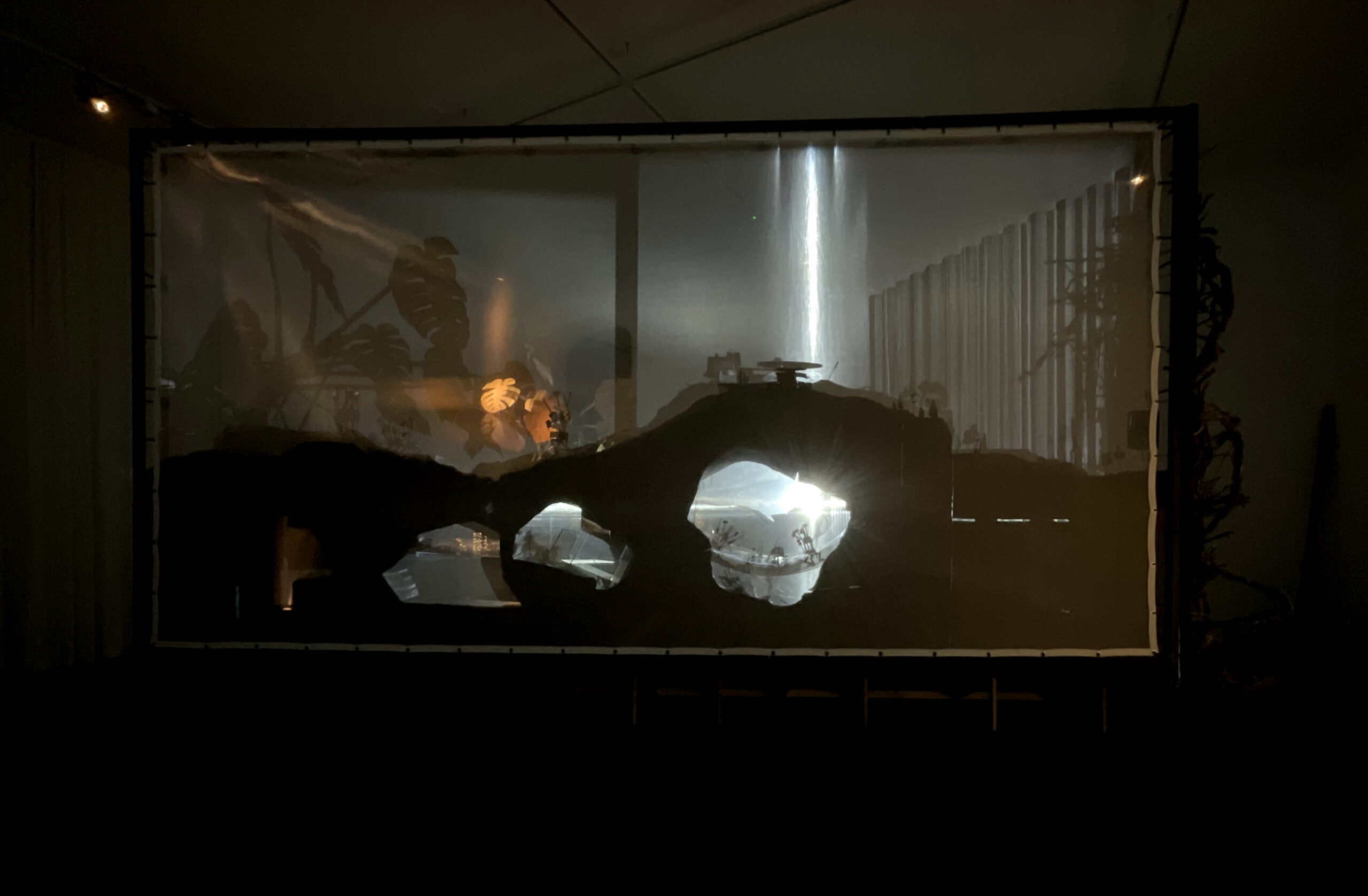1. Why did the artist want to exhibit this work at the Kinderbiennale?
2. Why are the contrasts of construction and destruction relevant in his work?
3. What do you think children can do for the environment with these participatory and interactive artworks from the Kinderbiennale?
1-2)
The work was not commissioned by the Kinderbiennale, it was previously exhibited in Hungary in a museum in Szentendre, as part of a larger solo exhibition. When the curator asked me if I would like to exhibit the work at this year’s Kinderbiennale, with the motto Embracing Nature, I was enthusiastic about the idea, because the work creates a vision of a fictitious landscape that is devoid of people, animated only by a sculpture made of hammers that has come to life. This recurring figure in my work, reminiscent of archaic sculptures or concrete monuments, is for me a symbol of destruction and construction. A tool that was created by humans and can be used equally for both goals. As a hammer monument, it symbolises the cycle of destruction and construction. It questions the paradigm a society has chosen, for example, in dealing with nature, in that the monument has, for some unknown reason, become independent, abandoned its pedestal and set off on a journey in the shadowy landscape.
3)
I think it is important to sensitise children’s awareness, for example, with regard to nature and our interaction with it (What is destruction? What is construction?) and to promote independent thinking. Art, for the most part, whether it is participatory or not, enables the experience of a wide, free thinking space that leaves a lot of room for one’s own thoughts and does not give pre-formulated answers. The children can seek and find their own reading and understanding. I wouldn’t call the work participatory, but installations, as in this case, where the whole space can be actively explored and everything like the sound, the light, the objects, the shadows interact, can stimulate the children in particular by addressing thoughts, feelings and senses in equal measure.
Art that deals with nature and our relationship to nature is also important for children because they are the ones who will inherit the consequences of our interaction with nature and it is always up to the next generation to find their own solutions.
Contact details
The copyright for the photos belongs to István Csákány.
He is represented by Glassyard Gallery www.glassyard.hu and Galerie Krinzinger www.galerie-krinzinger.at
Website www.csakanyistvan.com

0 Comments